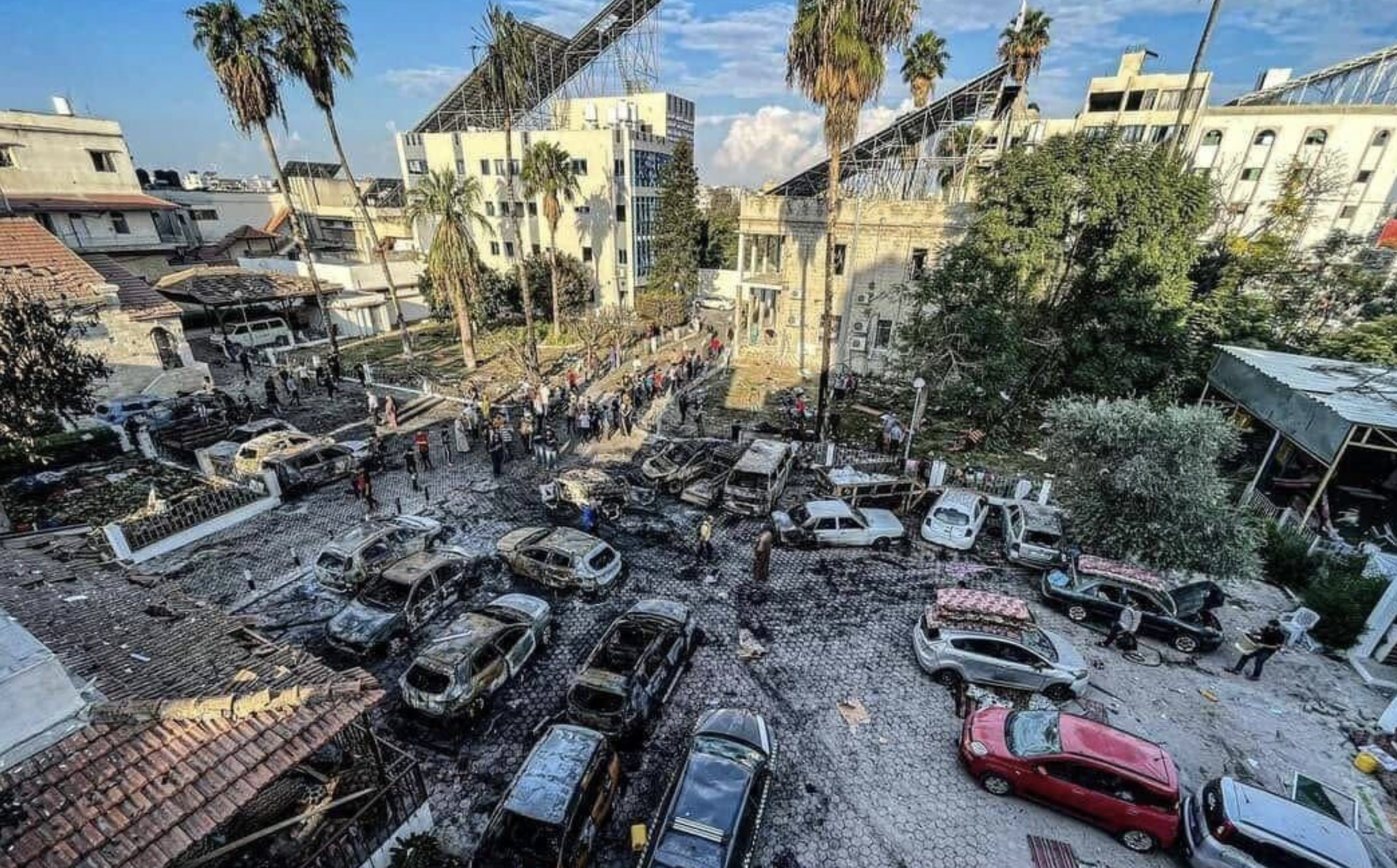An Al Jazeera investigation also debunked Israeli claims that a failed Islamic Jihad rocket caused the tragic massacre at the Al-Ahli Arab Hospital in Gaza.
An investigation by The New York Times regarding the devastating Israeli massacre on Al-Ahli Al-Arab Hospital in Gaza, which claimed the lives of over 500 Palestinians last week, has raised doubts about a critical piece of evidence used by Israel to disassociate itself from the attack.
The detailed analysis, drawing from multiple angles of footage and various sources related to the events of 17 October, dissects footage of a missile that has been cited by Israel and America in their attempts to pin the blame on a failed rocket from Palestinian group, Islamic Jihad.
The Al Jazeera video footage, which Israeli officials have cited as a key piece of evidence, appears to show a projectile soaring over Gaza and exploding in the air, followed by a ground explosion seconds later.
However, The New York Times’ probe challenges this assertion as it claims that the missile in the video “was never near the hospital” and was launched from the vicinity of Nahal Oz, situated at least two miles from the hospital.
The explosion appeared to have occurred in the sky above the Israeli-Gaza border.
“The Times’s finding does not answer what actually did cause the Al-Ahli Arab hospital blast, or who is responsible,” the New York Times investigation said.
“But the [NYT] analysis does cast doubt on one of the most-publicised pieces of evidence that Israeli officials have used to make their case and complicates the straightforward narrative they have put forth,” it concluded.
The hospital served both as a medical centre for those severely wounded by Israeli bombings and a shelter for Palestinians displaced by the brutal weeks-long war.
Al Jazeera investigation
A similar investigation by Al Jazeera had also dissected the same piece of evidence.
Earlier this week, the Qatari-network’s digital investigation team debunked Israeli claims that a failed Islamic Jihad rocket allegedly caused the tragic massacre at the Al-Ahli Arab Hospital in Gaza.
At the time of the hospital massacre, Israel’s Ministry of Foreign Affairs issued conflicting statements, initially suggesting that “weapons and explosives were deliberately stored inside the hospital,” only to later blame the catastrophe on a “malfunctioning rocket” from Palestinian Islamic Jihad.
An Israeli military spokesman repeated those claims on an interview with CNN and pointed towards a screenshot of an Al Jazeera live broadcast allegedly showing the strike that hit the hospital before the moment of impact.
In response, the Qatar-based network said it launched its own analysis using various live streams, including those by Israeli channels.
The Israeli Occupation Force (IOF) quickly scrambled to distance itself from the hospital massacre last week and immediately attributed it to Palestinian factions operating in Gaza following global outrage.
However, the denial appeared to come too little too late.
Hananya Naftali, a digital aide to Israel’s Netanyahu had already confirmed the Israeli Air Force targeted “a Hamas base within a hospital” before then removing the post.
Later, Naftali issued an apology on X for sharing a “Reuters report” that inaccurately alleged Israel’s involvement in the hospital massacre. He confirmed that he had since deleted the tweet, asserting: “As the [Israeli army] does not bomb hospitals, I assumed Israel was targeting one of the Hamas bases in Gaza.”
While Israel claimed intelligence indicated Islamic Jihad’s role in the disaster, Raf Sanchez, an NBC News foreign correspondent, said Islamic Jihad rockets “do not tend to kill hundreds of people in a single strike”.
Palestinian Ambassador to the UN, Riyad Mansour, went on record calling the regime’s Prime Minister Benjamin Netanyahu a “liar.”
Days earlier on 13 October, a children’s hospital in Gaza was targeted using white phosphorus. On 14 and 16 October, Israel ordered the evacuation of 22 hospitals, including Al-Ahli, and those designated as ‘Safe Zone’ hospitals.
Meanwhile, a video shared on X shows an analysis by a Marine Corps veteran, which has offered critical insights into the incident. His analysis revealed that the initial explosion likely lasted between 0.5-0.75 seconds, indicating it was not an incendiary device.
The type and extent of damage suggest the involvement of an explosive device ranging between 300-600 lbs., implicating munitions like the Mk-82/Mk-83, GBU-39, GBU-12, and AGM-65 Maverick Missile, all unavailable to Islamic Jihad.
Audio analysis also revealed that the sound of the explosion was consistent with a JDAM missile, a capability beyond Islamic Jihad’s arsenal.
So far, Israel has killed at least 6,546 Palestinians, including at least 2,704 children since it launched its most brutal campaign on the besieged Strip to date.







